How to Get a Fast Website Load Time: Why Milliseconds Matter
We've all been there – you click a link, eager to get to that page you want, but then…you wait. And wait. And wait some more as that little spinning circle or progress bar mocks you. In our age of instant gratification, slow website load times are one of the most extensive website sins. Just how critical are those need-for-speed page loads? The stats may shock you.
Table of Contents
Why Website Load Time is Crucial
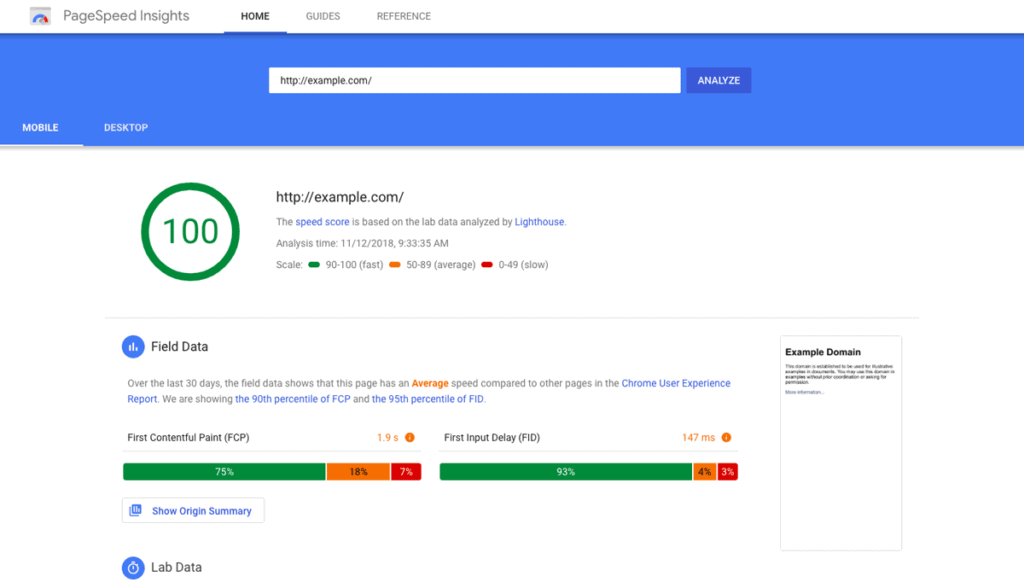
Few metrics matter more for the success of your website than load time. Lightning-fast load speeds keep visitors happy and engaged, improve conversions, boost your search rankings, and much more. Let's explore the massive impact of load time:
Business & Revenue Impact
This is where slow load times hurt. Numerous studies have shown a direct correlation between load time and conversions, sales, and revenue:
- For every 1-second delay in page load time, conversions can drop by up to 7%. If your site typically gets 100 conversions daily, a 1-second delay could cost you seven lost orders or leads each day.
- Amazon calculated that a 1-second slowdown could cost them $1.6 billion in sales yearly. Let that massive number sink in.
- A 2-second delay in load time increases bounce rates by a whopping 103%. Bounces mean real visitors giving up on your site.
- 47% of people expect a webpage to load in 2 seconds or less, and 40% of visitors will abandon the site if it takes more than 3 seconds.
Looking at those stats, it's clear that slow load times hammer conversions while fast load times keep visitors engaged and spending. Every millisecond matters for your bottom line.
Search Engine Ranking Factor
Search engines like Google want the best possible user experience, so load time weighs heavily into their ranking algorithms. All else being equal, the faster loading site will outrank the slower one. Load time is a confirmed Google ranking signal for desktop and mobile searches.
The more visitors you get from organic search, the more critical load time becomes. If two competing pages have similar content but one loads much faster, search engines will give that need-for-speed page a higher rank.
Mobile Web & User Experience
In our mobile-dominated web usage, slow load times are even more deadly. Mobile users often look for quick information on the go with limited time, data plans, and patience. A 1-second delay can feel like an eternity on a phone.
47% of people expect a web page to load within 2 seconds on mobile. A whopping 79% of shoppers dissatisfied with website performance say they are less likely to buy from the same site again. With the high stakes of mobile, you simply cannot afford a laggy, slow website.
Every second (or fraction of a second) shaved off your load time creates a better user experience that keeps visitors happier and more likely to convert. It's easy to see why load time is a critical metric for optimising.
Analysing Your Website Speed
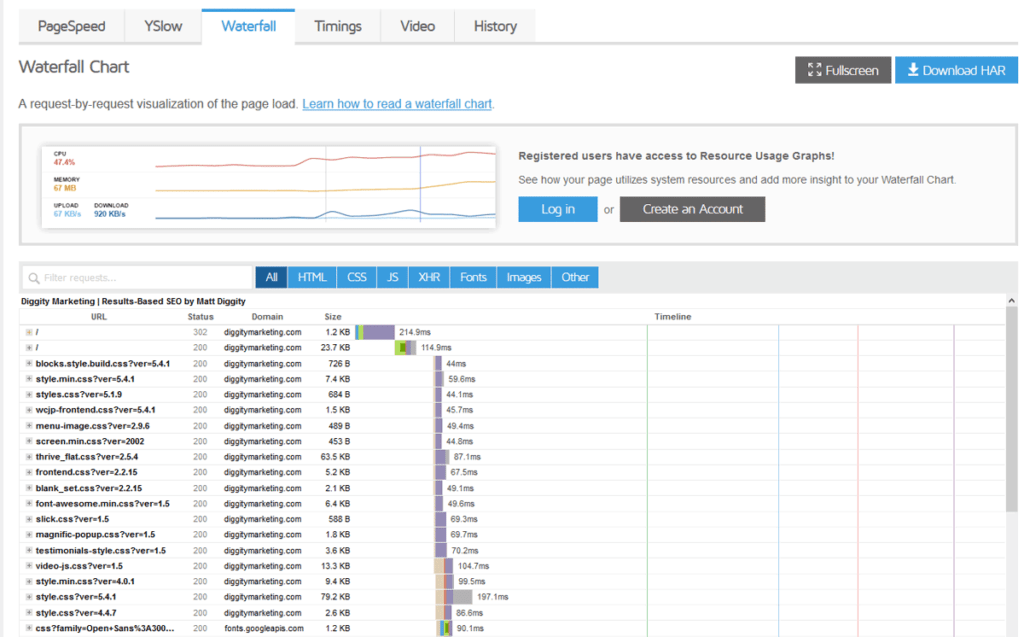
Now that we've covered why load time matters, how do you analyse and test your site's performance? There are many great free tools available:
Google's Tools
As you'd expect from the search giant, Google provides some excellent speed-testing tools that should be your first stop:
- PageSpeed Insights measures the performance of your pages on both mobile and desktop devices. It provides speed scores, stats, and optimisation suggestions.
- Test My Site expands on PageSpeed with additional benchmarking data. It compares your load times against other real-world websites.
- Lighthouse is an in-depth audit covering performance and other areas like accessibility and SEO. The performance section gives you a detailed roadmap to improve speed.
These free tools from Google are must-haves in your website toolbelt and will point out any glaring speed issues.
WebPageTest
WebPageTest is one of the most robust and full-featured speed test tools available. It allows you to test from location servers around the globe and analyse nearly every gritty detail of page load performance. There are charts, videos, waterfall diagrams, and more.
Think About the Real-World User
While numbers and scores are helpful, testing how users experience your site is essential. I find WebPageTest's video capture incredibly enlightening. This shows you a video recording of the page loading – it's eye-opening to experience exactly what your visitors do, including blank screens and delays.
Many speed tests are done on blazing-fast developer workstations and internet connections. This is not how most users access your site! The typical real-world visitor is on an average home/mobile internet connection or a busy corporate network. Be sure to factor in these real-world constraints when evaluating load times.
Set a Clear Baseline for Comparison
Getting a single score for “page load time” can be misleading. WebPageTest lets you establish a benchmark reading by reloading the page multiple times. This accounts for variations in load time and ensures you're measuring accurately. You can then compare this baseline against future tests to gauge the impact of code changes and optimisations.
WebPageTest's robust features and third-party objectivity complement the official Google tools. This is one of the best options for in-depth page speed audits.
Technical Factors Impacting Load Time
So what causes slow websites, anyway? There are both front-end and back-end factors at play:
Front-End Considerations
The front end is anything the browser loads to render the visual web page. Major factors here include:
- Page Weight (Uncompressed HTML, JavaScript, CSS, Images)
- Number of HTTP Requests
- Render-Blocking Resources
- Unoptimised Images/Videos
- Excessive Third-Party Content
- Inefficient Front-End Code
All these elements require time to download and process in the browser. The more lightweight and streamlined your front-end delivery, the faster those pages load.
Dumb It Down
Think of your website as a book you want to read quickly. The smaller and thinner that book is, the faster you can flip through it. A massive 800-page encyclopedia will naturally take much longer than a 50-page novelette. You want to “dumb down” your front end to deliver only what is required – no more, no less.
Remove unnecessary bloat like excessive scripts, third-party trackers, and large media files. Apply best practices for optimisation like compression, code minification, and HTTP/2. These techniques limit the “book” for blazing-fast page loads.
Back-End Factors
Even if your front end is perfectly optimised, slow server processing can still create lag. Key back-end bottlenecks include:
- Slow Application Logic
- Inefficient Database Queries
- Lack of Caching
- Insufficient Server Resources
- Poor Web Hosting
The longer your servers generate each page, the slower pages will appear in the browser. Make sure your application code is lean and efficient with minimal database queries. Caching your HTML output can eliminate much of this repeated server processing.
Finally, having adequate web hosting resources like fast CPUs, RAM, and SSDs ensures your servers aren't overwhelmed by traffic spikes. Even the most optimised application can halt without proper hardware and infrastructure.
Website performance is genuinely a full-stack endeavour. You must scrutinise both the front-end delivery and back-end processing to identify – and eliminate – any bottlenecks.
Front-End Optimisation Techniques
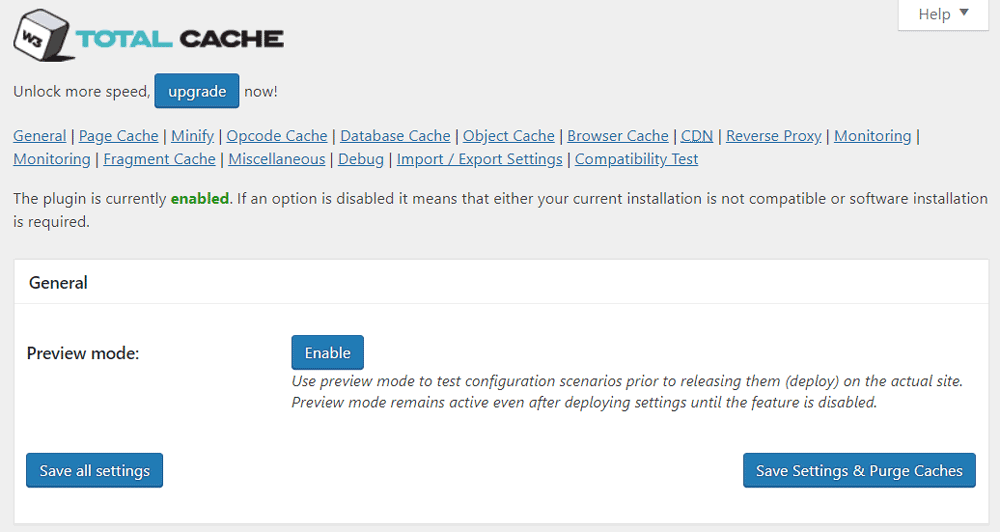
Now that we've highlighted the critical culprits of slow load times, what techniques should you use to achieve wicked-fast websites on the front end? Let's dive into some of the most potent optimisations:
Compress All Static Assets
You should obsessively compress text-based files like HTML, CSS, JavaScript, SVGs, etc., Using GZIP or Brotli compression; these files can achieve 70% smaller transfer sizes. Configure your web server to compress files on delivery automatically.
Images and videos can also benefit from compression, though the tradeoff is quality loss. Tools like TinyPNG can often compress pictures by 50% or more with little to no visible impact. For video, exploring newer codecs like AV1 can significantly reduce payload sizes.
Remember, every kilobyte shaved off directly improves your load times.
Minify & Concatenate Files
Removing all unneeded whitespace, code comments, and metadata from your HTML, CSS, and JavaScript files is known as minification. This creates a more compact version of the file with identical functionality.
Additionally, you should concatenate or combine multiple files into one. Instead of making six separate HTTP requests for 6 CSS files, the browser only needs to fetch one combined CSS file.
Both minification and concatenation reduce the overall download weight. They may sound like minor steps, but cumulatively, they can shave valuable milliseconds off load times.
Leverage Browser Caching
Browser caching allows a visitor's browser to store static file versions locally when first downloaded. On subsequent visits, the cache is checked before downloading the whole file again from the server.
You can explicitly set cache headers and expiration dates on your HTML, CSS, JavaScript, image, and other file types. This allows browsers to load many components instantly from the cache without re-downloading them.
Using browser caching is a huge performance win. Just update the cache headers to avoid serving stale versions when you change the file contents.
Load Assets Asynchronously
Many JavaScript files and third-party scripts can render-block the page by delaying content paint. To counter this, load any non-critical assets asynchronously so they don't impact the critical rendering path.
Methods like async and defer let you load JavaScript in the background without blocking the HTML parser. You can “lazy load” images and media to only fetch them when they enter the viewport instead of all at once.
Ensuring your critical content loads first provides an instant page rendering experience. The rest can trickle in asynchronously without that disruptive blank screen lag.
Optimise Images & Media
Images, video, and graphics comprise over half of a page's weight. Unoptimised media files are a leading cause of bloated, slow websites.
Start by serving images in the optimised modern format – WebP for opaque imagery and SVG for vectorised graphics. These compact file types can be 25-35% smaller than traditional PNGs and JPGs.
Next, ensure all media is compressed and sized appropriately for the highest density screen size it will display on. Delivering a 4K image to a 720p device screen is unnecessary.
Lastly, advanced image techniques like responsive images should be considered to serve only high-res versions to supported browsers. The upcoming AVIF format promises even better compression ratios.
Media can quickly balloon your page weight without careful optimisation. Getting images, video, and design elements right is crucial.
Adopt Modern Web Technologies
The web ecosystem is constantly evolving with new performance-boosting technologies. Leverage modern features like:
- HTTP/2 & HTTP/3 for parallelised transfers
- Brotli compression algorithms
- Preload/pre-connect resource hints
- Web workers for off-main-thread tasks
These cutting-edge web standards can improve load time, responsiveness, and the general experience. Browsers are quickly adopting the latest specs, and servers must support them.
The web moves fast – ensure your tech stack isn't falling behind and missing out on easy performance gains from evolving standards.
Content Delivery Networks (CDNs)

A content delivery network, or CDN, like Cloudflare, is one of the most potent performance enhancements available. CDNs intelligently replicate and serve your static assets from dozens of geo-distributed servers worldwide.
Instead of requesting files from your single origin, each visitor hits the CDN server node nearest their location. This proximity provides faster file downloads compared to the potentially considerable distance to the origin.
CDNs offer additional performance benefits like HTTP/2 support, gzip compression, load balancing, content caching at the edges, and instant purges/updates. A robust CDN is one of the easiest ways to slash load times globally.
Back-End Optimisations
While front-end delivery gets more attention, don't neglect back-end performance as a critical piece of the speed puzzle. Some key areas:
Eliminate Bloat in Application Logic
Streamline any inefficient code, implementations, or libraries weighing down your application. Inefficient database queries, unoptimised algorithms, memory leaks, and synchronous operations can create significant bottlenecks.
Audit your entire stack to isolate hotspots and areas for improvement. The old axiom “every millisecond counts” applies to back-end processing and logic.
Caching & Temporary Storage
Don't repeatedly generate the same HTML output for every request. Use caching layers like Redis or Memcached to store and serve rendered HTML responses from memory temporarily. Disk-based caching is better than nothing, but RAM will be even faster.
For APIs and CDNs, enable maximum browser caching of responses so clients don't refetch the same data. Persistent memory caches extend this concept to the server side.
Leveraging caching wherever possible avoids redundant cycles and allows for the provision of rapid, near-instantaneous responses. It's critical for high-traffic sites.
Always Cache…But Cache Wisely
But caching is a double-edged sword – you must carefully manage cache invalidation. Updating content requires systematically purging caches to serve the new data. Stale content frustrates users and cripples the cache benefits.
Monitor cache hit ratios, consider content volatility, and use cache hierarchies to maximise cache efficiency. Caching is a powerful technique when implemented correctly.
Offload & Decouple Resource-Heavy Tasks
Intensive, long-running processes like video transcoding, large file uploads, or consuming third-party APIs should be decoupled from the main request lifecycle.
Use lightweight queueing systems like RabbitMQ or Redis to offload these tasks to background worker processes. The web request instantly returns a processing response while the heavy job is asynchronously completed elsewhere.
You can also look at serverless computing platforms like AWS Lambda for elastically parallelising and scaling workloads without managing servers.
Restructuring your stack with a non-blocking, async architecture helps isolate the impact of more intensive tasks.
Provision Sufficient Infrastructure
Ensure you have sufficient web server CPU, RAM, disk, and networking resources to handle your traffic demands without saturating or throttling. Nobody enjoys that laggy, unresponsive feeling when servers are overloaded and swamped.
Automatically scale infrastructure up/down based on traffic using load balancers and orchestration tools like Kubernetes. Upgrade to faster disks like SSDs. Implement CDNs and full-page caching where possible.
Invest in hosting on quality managed services or bare-metal hardware rather than skimping on underpowered shared hosts or bargain basement VPSes. You wouldn't hire an overwhelmed employee – so don't hamstring your website either!
Monitoring key backend performance metrics is a must. Identifying bottlenecks is the first step in optimising and rightsizing your infrastructure and services.
Measuring & Optimising Beyond “Page Load Time”
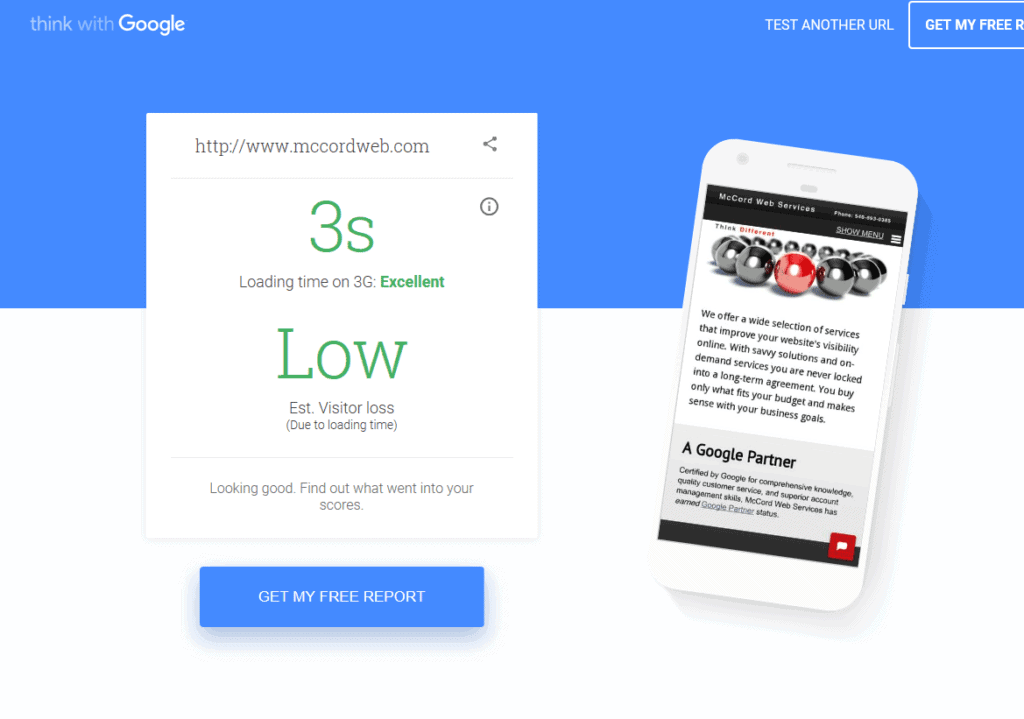
While a fast page load time is critical, the user's perception of speed goes far beyond that initial load. Other key performance metrics to monitor include:
Time to First Byte (TTFB)
TTFB measures when a visitor requests a page and when they receive the first byte of page content from the server. Slow TTFB points to back-end response delays in application logic, databases, caching, networking, etc.
First Contentful Paint (FCP)
FCP captures the time from navigation to when content is first rendered on the screen – text, images, canvas elements, etc. Additional asset loading delays can bottleneck render times even after the HTML arrives.
That Dreaded Blank Screen
Have you ever stared at a blank screen waiting…and waiting…for something, anything to show up? FCP quantifies that empty void. A fast FCP avoids the perception of “Is this thing on?” by instantly delivering some visual content.
Largest Contentful Paint (LCP)
While FCP looks at content rendering, LCP measures when the largest/main content element appears – like a hero image, text block, etc. This indicates when the core viewport is fully loaded and usable.
Time to Interactive (TTI)
TTI marks when a page's main sub-resources have loaded, and the UI is minimally interactive. This includes detecting click/scroll inputs. Slow TTI creates laggy, janky experiences.
Even if the main content has been rendered, auxiliary code execution hinders proper responsiveness. Quick TTI avoids sluggish, frustrating micro-interactions.
Cumulative Layout Shift (CLS)
CLS quantifies how much unstable content layouts shift as page elements load in. It measures both the frequency and distance of unanticipated layout shifts.
Have you ever tried to click something, only for the content to move abruptly, and you end up clicking the wrong thing? Those jarring, unexpected layout shifts create confusing user experiences and reflect poor web performance.
Ideally, you want no layout shifts so the page loads in a controlled, flawless render with no reflows or adjustments as assets load. A low CLS score indicates a smooth, stable visual experience.
Perception is Reality
While page load time is vital, these more granular performance metrics, like FCP, LCP, TTI, and CLS, capture the user's perceived performance and smoothness.
A site can fully load in 1 second but still feel sluggish if it has high CLS from shifting content or poor TTI responsiveness. Optimising for these more holistic real-user metrics creates that coveted “wow, this site is wicked fast” experience.
Performance Budgets
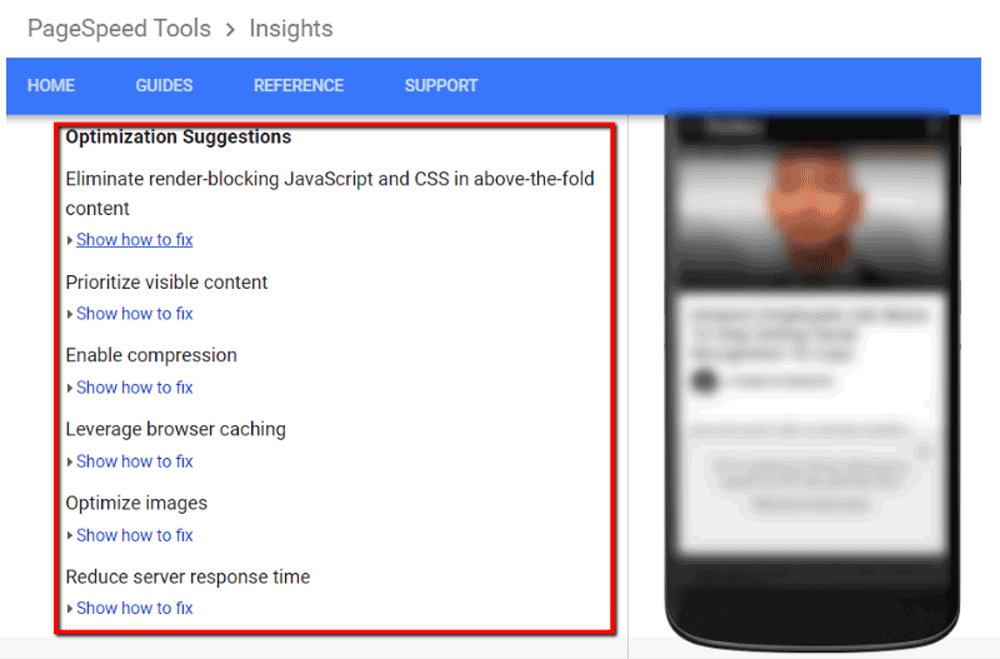
With the array of performance metrics to track, it can be challenging to determine acceptable thresholds and standards. This is where setting a performance budget becomes useful.
A performance budget caps the maximum allowed page weight, HTTP requests, CPU execution time, and other vital indicators. It enforces load time constraints to protect performance from regressions.
For example, you may set a budget:
- Maximum 1MB total page weight (transferred)
- No more than 30 HTTP requests
- LCP < 2.5 seconds
- CLS < 0.05
Any commit that exceeds the predefined budget fails performance checks and cannot deploy until remediated. With established budgets, you have clear performance guardrails in place.
Baseline for Targets
When defining a performance budget, establishing realistic, achievable targets based on your current performance benchmarks is key. You don't want to start with highly aggressive goals that require massive refactoring.
Set an initial baseline by reviewing existing metrics across your site. Perhaps the 75th percentile of LCP times can inform a reasonable first target. Over time, incrementally tighten the budgets to drive continuous improvement.
Tools like Lighthouse can provide performance scoring and metric targets to build initial budgets. You can then customise and harden the limits as appropriate.
Don't Let It Slip
The more considerable risk is scoping budgets too loosely and allowing rampant performance degradation over time. With no enforced limits, it's easy for asset bloat, inefficient code, unnecessary payloads, and tech debt to accumulate imperceptibly. Pretty soon, your load times are abysmal.
Setting a firm performance budget acts as a forcing function to uphold high standards and combat entropy. It prevents seemingly minor additions from ballooning, significantly impacting that all-important load time.
The Need For Speed Never Stops
If there's one constant on the web, user expectations around website speed and performance only keep rising. What was considered “fast” a few years ago feels unbearably laggy today.
With each passing year, internet connections get faster and more ubiquitous. Phones and devices become more powerful. Visitors always want lightning-fast load times everywhere they browse.
Optimising for performance is never a “one-and-done” endeavour. It's a continuous journey without a permanent finish line. The performance bar keeps rising as user demands escalate and new technologies emerge.
Always Be Optimising
You can stay ahead of the curve by developing a culture and processes centred around performance awareness. Implement:
- Performance budgets & checks in your deployment workflows
- Bot and real user monitoring
- Performance as a feature in release planning
- Ongoing code audits & profiling
Treat performance as a critical, first-class priority – not an afterthought. Create a fast feedback loop to identify and remediate any regressions quickly.
Embracing performance as a fundamental software philosophy enables you to deliver best-in-class load times that “wow” visitors no matter how high the bar is raised.
Speed is a Competitive Advantage
The benefits of relentless optimisation efforts compound over time. While competitors let their sites degrade into bloated, slow trash fires, your ruthless performance focus keeps your loading experience silky smooth.
This speed becomes a competitive edge in customer satisfaction, conversions, retention, and revenue. All because you made performance an ingrained priority from day one.
Conclusion
Website load time is a massively underrated factor in a site's success. Those precious milliseconds directly impact user experience, conversions, search rankings, and growth metrics.
The bottom line is that fast pages load faster, and faster is better. Period.
In this lightning-quick world, you cannot afford to serve laggy, slow experiences that haemorrhage visitors and revenue. Optimise your whole front-end and back-end stack for instant load times and a blink-and-you'll-miss-it rendering performance.
Leverage all the techniques in your arsenal – compression, minification, caching, CDNs, asynchronous loading, efficient hosting infrastructure, and more. But don't stop there – continually monitor and improve with an ingrained performance culture. Never let bloat accumulate.
In the race to deliver the fastest, smoothest websites, those who prioritise load time performance will leave their sluggish competition eating dust. So tighten those laces and get ready for a wicked-fast web experience!
Frequently Asked Questions
What is a good page load time target?
Ideal page load times should be under 1 second, with a maximum of around 3 seconds if necessary. However, expect user expectations and necessary load times to continue dropping. Prioritise getting as close to instantaneous loads as possible.
How much does page load time affect my Google search rankings?
Page speed is a confirmed Google ranking factor for desktop and mobile search results. While the precise impact varies depending on many factors, all else being equal, the faster-loading website will outrank a slower one. Fast load times give your pages a definitive SEO advantage.
Does website speed matter for mobile users?
Website speed is exponentially more important for mobile users than desktop users. Mobile visitors often have less patience, slower connection speeds, and higher expectations of quick device load times. A 1-2 second delay can feel interminable. Mobile performance should be a top priority.
Do I need a CDN for optimum load times?
While not strictly required, using a content delivery network (CDN) is one of the most powerful and effective optimisations for improving load times across the globe. The geographically distributed CDN edge servers allow fast, localised file delivery to every visitor. Most sites will see significant speed gains from a robust CDN service.
How do browser caching and compression improve website performance?
Browser caching allows a visitor's browser to store and quickly reload a local copy of your site's static files like images, CSS, and JS on repeated visits. This avoids having to constantly re-download all the assets for a faster experience. Compression like Gzip encodes your file payloads into smaller transfer sizes for speedier delivery. Both techniques are highly recommended.
